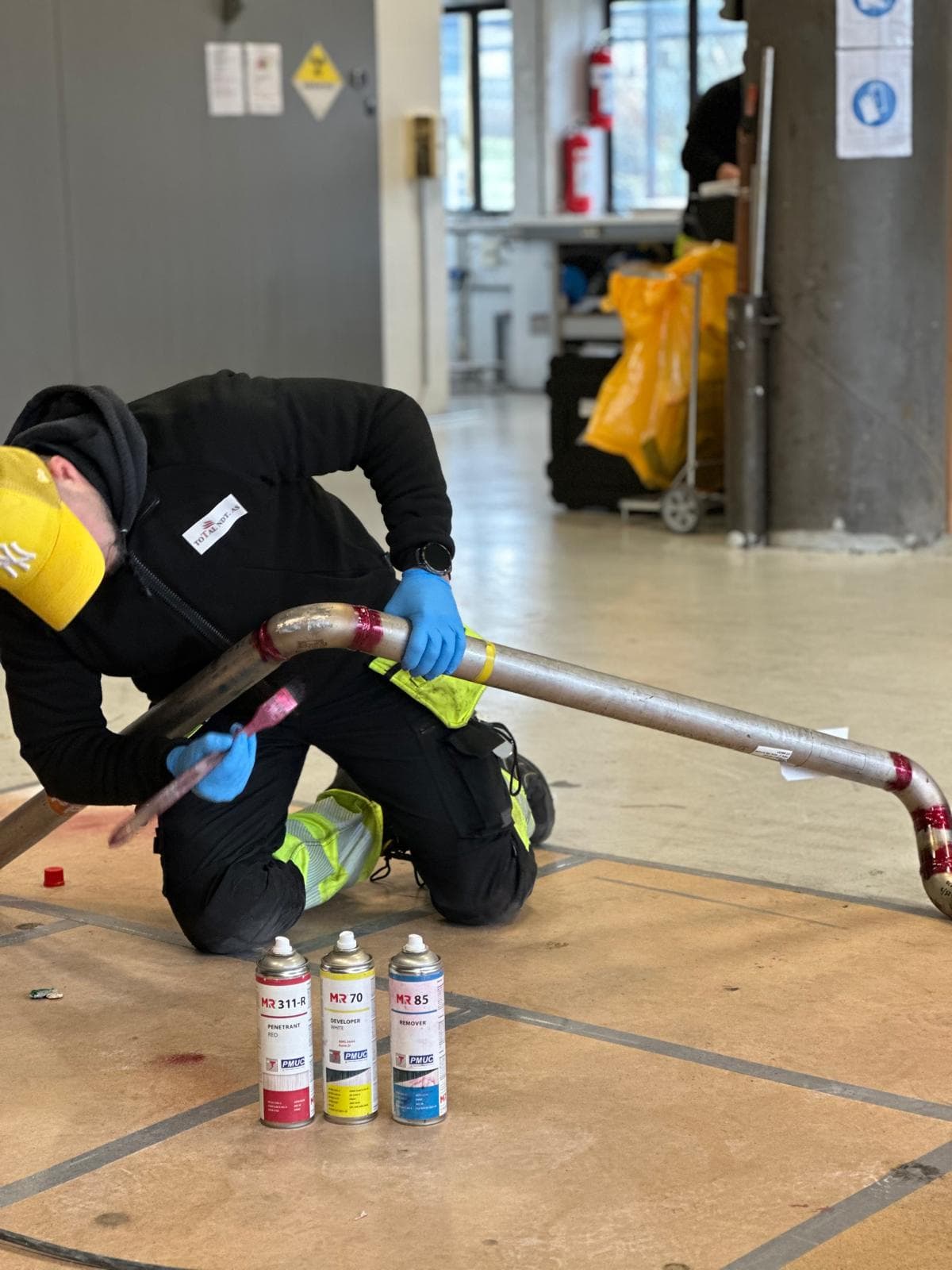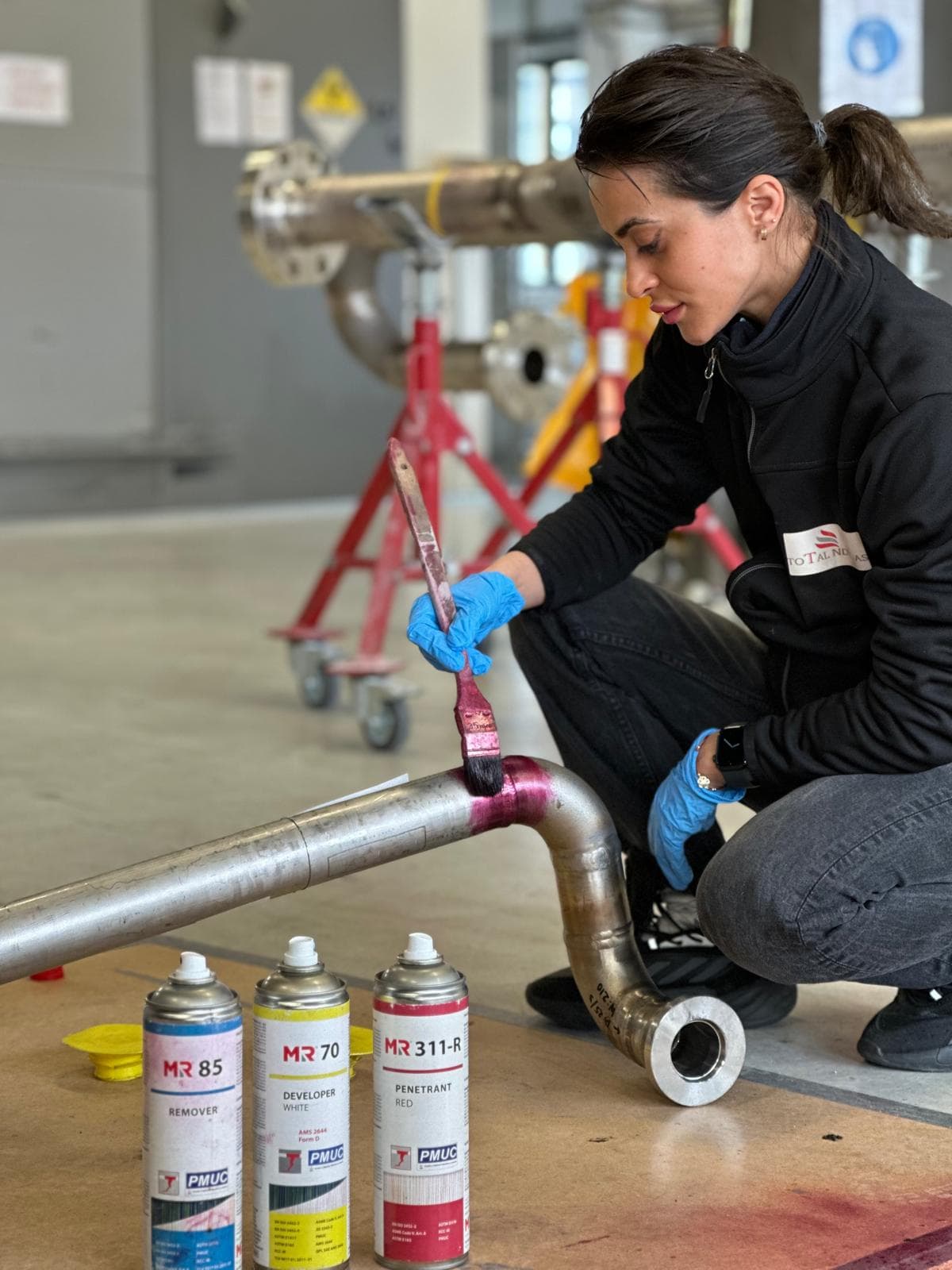
Liquid Penetrant Inspection
Liquid penetrant inspection (LPI), also known as dye penetrant testing (DPT) or liquid penetrant testing (PT), is a widely used non-destructive testing (NDT) method for detecting surface-breaking flaws in non-porous materials. This highly sensitive technique is effective for identifying cracks, porosity, leaks, and other surface defects that may compromise the integrity of the material.
How it works:
1. Preparation: The surface to be inspected is first cleaned thoroughly to remove any contaminants that could interfere with the inspection process. This step is crucial to ensure optimal results.
2. Application of Penetrant: A visible or fluorescent dye penetrant is applied to the surface of the material being inspected. The penetrant is allowed time to seep into any surface discontinuities through capillary action, ensuring comprehensive coverage.
3. Dwell Time: After the penetrant has been applied, a dwell time is observed to allow it to fully penetrate into any surface defects. The duration of this step may vary depending on the specific inspection requirements and the type of penetrant used.
4. Excess Penetrant Removal: Once the dwell time has elapsed, excess penetrant is carefully removed from the surface using a cleaning agent or solvent. This step is crucial to ensure that only the penetrant trapped within surface defects remains for subsequent inspection.
5. Application of Developer: A developer, typically in the form of a white powder or a liquid, is applied to the surface. The developer acts to draw out the trapped penetrant from within surface defects, making them visible against the contrasting background provided by the developer.
6. Visual Inspection: The surface is then inspected under appropriate lighting conditions. Any indications of surface defects, such as indications of dye bleed-out or fluorescent indications under ultraviolet (UV) light, are carefully examined and evaluated by trained inspectors.
Applications:
Liquid penetrant inspection is utilized across various industries, including aerospace, automotive, manufacturing, petrochemical, and power generation, for the inspection of welds, castings, forgings, machined components, and other critical parts. It is commonly employed for quality control, defect detection, and maintenance purposes to ensure the reliability and safety of components.

Exceptional sensitivity for detecting minute surface flaws.
Versatile across materials: Works with metallic, non-metallic, and more.
Efficient on large surfaces: Quick inspections at minimal cost.
Complex geometries welcome: No adjustments needed for intricate parts.
Immediate surface visibility of defects for rapid assessment.
Portability perfected with aerosol spray cans for on-the-go use.
Cost-effective with affordable materials and equipment.
Dual-method adaptability: Standard color-contrast or enhanced fluorescence for detailed analysis.
Other Services
Check out our other services
Radiography
Our radiography services are designed to provide you with the insights needed to make informed decisions.
Ultrasonic Inspection
Our ultrasonic inspection services are designed to ensure the safety and reliability of your assets.
Visual Inspection
Our visual inspection services are designed to provide you with the insights needed to make informed decisions.
Magnetic Particle Inspection
Our magnetic particle inspection services are designed to ensure the safety and reliability of your assets.
Hardness Testing
Our hardness testing services are designed to ensure the safety and reliability of your assets.
Positive Material Identification
Our positive material identification services are designed to provide you with the insights needed to make informed decisions.





